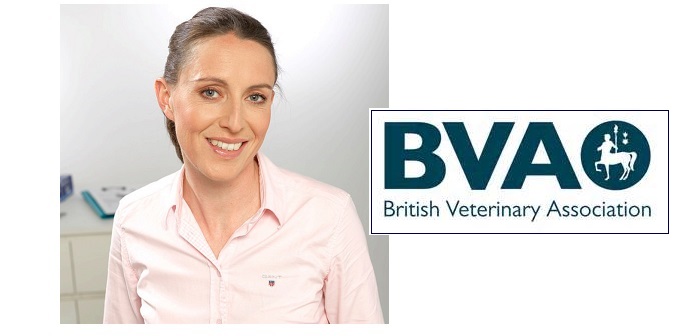Ensuring a strong, united veterinary voice is heard where it matters most was the key message delivered by British Veterinary Association (BVA) President Gudrun Ravetz in her outgoing speech at BVA Members’ Day in Belfast.
The BVA President opened her final address with a quote highlighting the impact of BVA’s lobbying, particularly following the outcome of the EU Referendum:
“‘This is an important issue … we do rely on, and warmly welcome the support we have from EU national vets, who are hugely important to us,’ said Defra Parliamentary Under Secretary of State, Lord Gardiner to the House of Lords in June [2017]. He started by telling fellow Peers that ‘I was at the British Veterinary Association and RCVS [Parliamentary] reception yesterday.’”
Ravetz emphasised the importance of coordinated working within the veterinary family, her Presidential theme, to ensure the profession maintains the recognition that it has so far achieved:
“It is in big change that the veterinary family is so important, where small acts of joined up working can lead to success. It’s why … we launched our #teamvet campaign, jointly with the British Veterinary Nursing Association, to champion the value of the veterinary team; whoever you are, whatever your affiliation, and wherever in the world you are from.”
The BVA President highlighted that it is the Association’s representative role, lobbying UK governments and speaking out in the media, that BVA members have said they most value.
She said: “We sent the Secretary of State [Michael Gove MP], amongst many others, BVA’s Brexit report … The following week, the important role vets play in UK animal health, welfare and public health was recognised by the Environment Secretary during one of his first public interviews on Radio 4’s agenda-setting Today programme. We are driving the conversation forward.”
She continued to outline the unprecedented level of parliamentary engagement that will be required from BVA, and the wider profession, to influence Brexit negotiations moving forwards – with projects involving the Chief Veterinary Officer and Royal College of Veterinary Surgeons (RCVS) already underway to identify veterinary workforce capability and capacity issues, and develop solutions.
On workforce issues, the BVA President said: “Even before the EU Referendum, we have known that there have been real concerns and challenges to maintaining a strong, sustainable veterinary workforce. One of the pieces of work that BVA is progressing from the Vet Futures Action Plan is research … to understand the underlying causes or mismatches between expectations and the realities of working life. We all have a role to play in making veterinary workplaces supportive and nurturing places for veterinary colleagues – new graduates and those not-so-new.”
Ravetz explained how BVA members’ support fuels the Association’s success: “[BVA members] told us that welfare at slaughter should be a government priority and, after years of hard campaigning, last month saw Defra announce plans to introduce mandatory CCTV in all slaughterhouses in England with full and unrestricted access for Official Veterinarians … shortly afterwards, Scotland announced their consultation on CCTV in abattoirs too. We are submitting consultation responses – and the devil will be in the detail – but this should not detract from the incredible influence and impact of the veterinary team when it pulls together.”
With a recent survey of BVA members revealing that breeding and hereditary defects are the most pressing animal health and welfare concern across the UK, the outgoing BVA President continued:
“Our calls for pet owners to put animal health and welfare before looks when considering buying brachycephalic and other designer breeds has hit national headlines – including being the most read story on BBC online – raising awareness of breed-related health problems.”
She went on to thank all of BVA’s specialist divisions for their positive engagement during her Presidency: from partnering in campaigning on welfare at slaughter and raising public awareness of the five welfare needs, as part of the Vet and VN Futures Action Plans; to close working on disease advisory and outbreak responses; as well as issuing joint position papers, offering real-world solutions to priority welfare problems as identified through BVA’s Animal welfare strategy.


